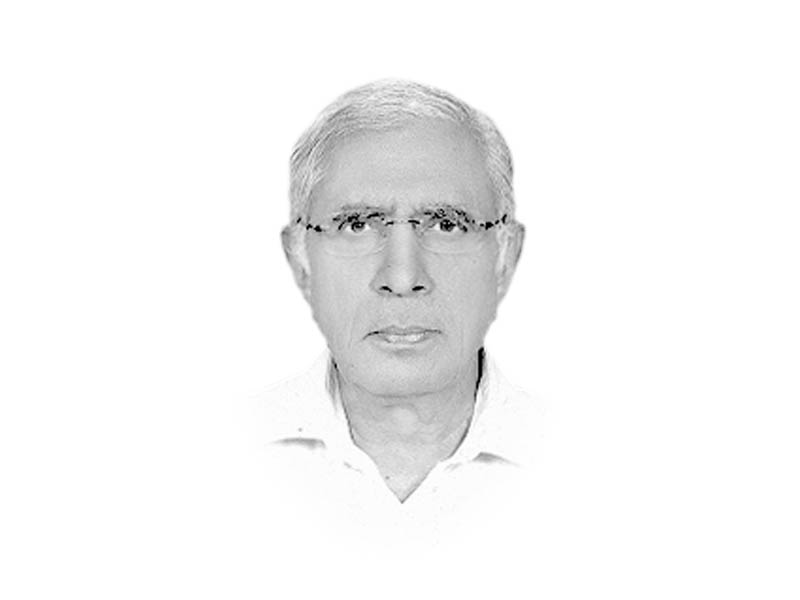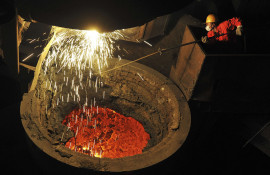
Pakistan’s economy has always remained dole-driven and import-based. Dole-driven because our big businesses, landed aristocracy and professionals have consistently refused to pay taxes on their incomes, making it next to impossible for successive governments to balance the budget without internal and external borrowings. Most of the time, foreign loans are obtained at highly concessional rates and at times, as outright grants but with conditions so framed as to make the recipient return to the donor at least 99 cents from every aid-dollar received. And the economy is overwhelmingly import-based because our manufacturers continue to feel financially more comfortable in low-value added exports. The burgeoning gap between flagging export proceeds and steeply rising import payments is also covered with foreign dole.
The swelling dole, which is actually debt with strings attached, further worsens the balance of payments position because of the soaring burden of debt repayment on the budget, forcing successive governments to incur ever more condition-ridden debt.
One could get a good idea about our export potential by taking a quick glance at the list of our main exports: cotton and knitwear (28 per cent of total exports); bed wear, carpets and rugs (eight per cent) and rice (eight per cent). Others include leather, fish, sports goods and fruits and vegetables. Main export partners are: the United States (15 per cent of total exports), the United Arab Emirates (10 per cent), Afghanistan (9.5 per cent), China (nine per cent), the United Kingdom (three per cent) and Germany (two per cent). And here is a list of our main imports: machinery, petroleum and petroleum products, chemicals, transport equipment, edible oil, iron and steel, fertiliser and tea. These imports account for over 70 per cent of total imports. Among these categories, machinery, petroleum/petroleum products and chemicals account for over 50 per cent of total imports.
Both lists are depressing. There appears to be no way we can reduce our dependence on the items listed on the import side, unless of course we stumble upon big oil and gas discoveries. And there seems to be no way we can expand the list of our exports or make our manufacturers invest in higher value added exports. And if we continue with this depressing foreign trade regime, we are likely soon to be crushed under an impossible burden of debt, and it is more likely that by that time all sources of loans to pay back the old loans would have dried up with imminent default looming large.
So what do we do now? Continue living with such a depressing foreign trade regime and suffer the imminent consequences or try looking for ways to break the shackles of this regime?
Let us take a look at our comparative advantages: 1) We are an agricultural country; 2) We are a market of about 190 million people; 3) Pakistan is located at the crossings of trade routes from Casablanca in Africa to Kashgar in West China’s Xinjiang Uyghur autonomous region and from Thailand in Southeast Asia to Turkey beyond the Middle East; 4) China and Pakistan are all set to build a 2,000-kilometre economic corridor connecting Kashgar in China to the southwestern Pakistani port of Gwadar with road and rail. And one cannot also rule out the possibility –– in a couple of years –– of overland transit trade route through Pakistan linking India with Afghanistan and beyond. These advantages can be exploited to the maximum if we become a warehouse/trans-shipment economy rather than continue to hanker for an industrial economy, which we have been trying all these 66 years to achieve but without any success.
This would require a well-thought-out trade policy that would allow almost free-of-duty entry of raw materials, intermediaries and equipment in knock-down condition to be warehoused in Pakistan and then forwarded to final destinations after the required value addition. Such a regime would also require letting the rupee appreciate/depreciate on its own without any artificial crutches.
Such a policy would also attract foreign direct investment in avenues in which it would be more economical for the sponsors to fabricate items inside Pakistan for local consumption and also to re-export them. This will also facilitate the transfer of technology and training of skilled manpower. Transfer of appropriate technologies would also open the way for Pakistan from being an agricultural country to becoming a leading high quality processed-food exporter.
Published in The Express Tribune, March 12th, 2014.
Like Opinion & Editorial on Facebook, follow @ETOpEd on Twitter to receive all updates on all our daily pieces.
COMMENTS (10)
Comments are moderated and generally will be posted if they are on-topic and not abusive.
For more information, please see our Comments FAQ
































































Author has given a good suggestion but it should be just one of the policies. Don't put all the eggs in warehouse economy as our enemies will find it easy to harm us. . Investing in IT can also help us export worth billions of dollars. . If every three years we start producing one item (industrial goods) that we import, that would be a big achievement. Make a list of top ten imports (such as Mobiles, laptops, TVs etc) and start building them here one by one! Don't even need to export... as long as you save import bills.
@hamza khan: the comments are to be evaluated with logic/ rationale and not on the nationality.this speaks the wisdom or lack of it.
A warehouse economy - isn't that what the Iran-Pakistan-India gas pipeline was supposed to be towards? And how easy has that turned out to be? Indian goods transiting through Pakistan? That should be a convenient invasion route for a feared enemy - ask your security wonks. And before you set up all those shiny warehouses you had better figure out how to defend them against those Kalashnikov-wielding "strategic assets" you have been breeding for the last few decades. A country's economy is only a reflection of its governance, and that in turn depends on a peoples' sense of identity, which is simply reflected in their willingness to pay taxes. Not paying taxes means you do not believe in nationhood. I think Pakistan has a lot of problems upstream that need attending before it can even think of addressing its economy.
@hamza khan: @unbelievable:
Both of you have stooped very low by exchanging insulting verbal brickbats instead of commenting on the substance of the article. Shame on you. Your behaviour portrays you, and the societies you represent, as being immature. Please try and maintain the decorum of this space as well as the etiquette of debate.
ET: there should be a stricter filter at your end to disallow such insulting and irrelevant comments.
Accurate assessment of the economy but the warehouse/transhipment solution doesn't make much sense to me. First off your not the "hub" the Editors portrays and China and the Stan's can't depend on Pakistan for transit so long as your Jihad Central. If you ever become a peaceful country with a reliable judiciary then their are plenty of investors who are willing to take advantage of low wages and setup factories allowing you to diversify into higher margin exports.
Agree with the Warehsouse suggestion, kind of like Dubai's economy which revolves around re-exporting.
Great idea; and practical too !!
Great idea and eminently practical !!
interesting reading and true picture of the economy. What I do not agree is the Suggestions to improve which are naive. I have my own conclusions. One of the most famous maxims of Deng, dating back to the years before the Cultural Revolution, states that "It doesn't matter whether a cat is white or black, as long as it catches mice." In other words, he did not worry too much about whether a policy was capitalist or socialist as long as it improved the economy". After China accepted a different model of growth, the outcome is there for the world to see. I say improve production methods and concentrate on exports to compete with the outside world. For that to happen, we need more econmists to lead the pack. Banking on easy way to impoprt luxury items, will get us nowhere.